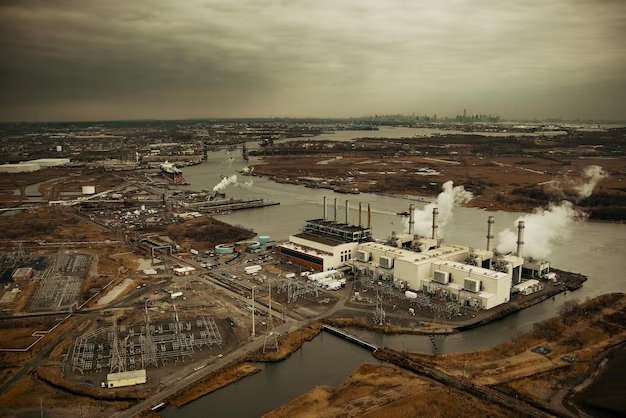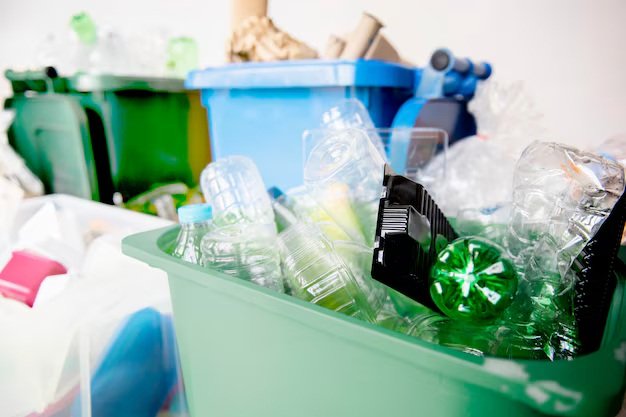Wastewater Plants Emit Twice the Greenhouse Gases Officials Counted
A new, large-scale study has found that municipal wastewater plants in the United States release far more greenhouse gases than regulators and scientists thought. Researchers driving an electric mobile laboratory measured gas plumes around 96 treatment plants and found methane emissions were roughly 2.4 times higher, and nitrous oxide about 1.9 times higher, than the Environmental Protection Agency’s inventories. According to a 2025 report by Princeton University, the team estimates wastewater treatment contributes about 2.5% of U.S. methane and 8.1% of U.S. nitrous oxide emissions — a much bigger share of warming than models assumed.
This matters because methane and nitrous oxide trap heat far more effectively than carbon dioxide in the short and medium term. That makes uncounted emissions from sewage systems a near-term climate problem we can target. The Princeton team published their findings in Nature Water in October 2025, after a 14-month field campaign that sampled plants in different seasons and weather conditions to capture real-world variability.

Why Official Counts Missed So Much
There are two reasons inventories have been too low. First, traditional methods estimate emissions from a few measured process points — for example, a single tank or pipe — and then scale up. But real facilities are complex mosaics of tanks, pipes, vents and open basins added over decades. A small, poorly sampled part of a plant can miss major leaks or variable hot spots. Second, emissions fluctuate with weather, storms, and operational events: a heavy rainstorm, a maintenance change, or a faulty blower can suddenly raise emissions for hours or days. The Princeton authors stress this unpredictability: “One time, we were invited into a facility and found high concentrations of nitrous oxide around one aeration tank. We came back a week later, and there was nothing,” a team member recalled. This variability meant that snapshot measurements used in inventory methods could systematically undercount true releases.
The problem is not entirely new. A landmark 2023 study — also led by researchers at Princeton — used mobile and laser-based methods and concluded municipal wastewater methane was nearly double previous estimates. That earlier work raised the red flag that point measurements and simple bottom-up models miss sector-level emissions. The 2025 Nature Water paper builds on that work by expanding the sample of plants and adding concurrent nitrous oxide and ammonia observations, giving a clearer picture of the sector’s total contribution. According to the study, earlier field studies already suggested the gap; the new paper quantifies it across more facilities.
Why worry about nitrous oxide (N₂O)? It’s less visible than methane in news headlines but more potent: a kilogram of N₂O has many times the warming power of a kilogram of CO₂ over decades. N₂O also damages the ozone layer and is produced by microbial reactions when nitrogen-rich waste is treated under certain oxygen conditions. The Princeton team found that nitrous oxide emissions are a large part of the sector’s warming impact — and that a small number of plants disproportionately drive those emissions.
From Problem to Power: How Utilities Are Turning Waste into Clean Energy.
There are real, working examples of wastewater systems turning a climate liability into a resource. Several U.S. facilities capture the methane produced during anaerobic digestion and use it to make heat and electricity. The East Bay Municipal Utility District in California co-digests food waste and sewage solids, turning the biogas into power; EBMUD became one of the first U.S. plants to produce more renewable energy on-site than it needs. According to EBMUD, this approach cuts fossil fuel use and can even provide revenue or savings to utilities.
DC Water’s Blue Plains project and other waste-to-energy installations show the same basic idea: capture, condition, and use the methane instead of flaring it or letting it leak. Barcelona has taken steps to push this even further — converting human-waste-derived biomethane to fuel some buses in pilot projects, proving that treated biogas can power public transport in the right systems. These real-world examples show that emissions can be reduced while improving energy resilience. A report by DC Water in 2015 and reporting on Barcelona’s 2025 pilot both document these practical pathways.
Not every utility has the money or staff for big upgrades, however. That’s where the Princeton study’s most hopeful detail comes in: most of the excess emissions come from a relatively small number of “super-emitting” plants or processes. That means targeted fixes — better maintenance, leak detection, optimising aeration controls, or investing in anaerobic covers and gas capture at a handful of sites — would reduce a large share of the sector’s excess warming. “If we can get more information on the plants, we can make it easier to get a handle on the air emissions as well as the water,” one of the lead researchers said.
What Should Cities and Utilities Do Next?
First, measure better. The core finding from the fieldwork is simple: you can’t manage what you don’t measure. Utilities should adopt more comprehensive, facility-level monitoring — not as a regulatory punishment but as a diagnostic tool to identify and fix the biggest emitters. Mobile labs, drones, continuous monitors, and periodic perimeter surveys make the invisible visible. The Princeton University research team, for example, used an electric mobile lab equipped with laser and commercial sensors to capture gas plumes around entire plants — a method that proved far more revealing than single-point sampling.
Second, focus on low-cost operational fixes that reduce emissions quickly. Many emission events come from transient operational failures or mis-set controllers. Simple steps — improved maintenance, better training for operators, troubleshooting aeration controls to avoid conditions that produce nitrous oxide, and covering open digesters to capture methane — can cut emissions without big capital outlays. Several utilities have reported that optimising operations and adding basic gas capture improves both emissions and energy economics. A report by the EPA and industry case studies has shown that co-digestion and cogeneration reduce net fossil energy use and can save or earn money for utilities.
Third, invest where it pays back fast. Because a few facilities account for a large portion of excess emissions, city leaders should prioritise upgrades at those plants. When biogas can be turned into electricity or pipeline-quality biomethane, the project can earn revenue or offset energy bills — an argument many finance offices understand. Projects that combine emissions reductions with resource recovery (energy, nutrient capture, biosolids reuse) score higher on both climate and fiscal grounds. Examples from EBMUD, DC Water and recent European pilots show the pathway.
Fourth, change the inventory rules. National and city greenhouse gas inventories should incorporate facility-level measurements and adjust emission factors to reflect real-world variability. International frameworks such as the IPCC guidelines and global assessments by organisations like UNEP already emphasise the need to close measurement gaps — accurate inventories are the foundation of credible climate action. A 2024 UNEP report warned that underestimated sources undermine mitigation plans, and the IPCC’s Sixth Assessment Report (AR6, 2023) makes clear that cutting short-lived climate pollutants such as methane is critical this decade. Both the 2024 UNEP report and IPCC AR6 highlight the benefits of rapid methane reductions for near-term climate outcomes.
Practical checklist for utility managers and city leaders (short, concrete steps): measure whole-facility emissions with mobile or perimeter methods; identify and prioritise the top-emitting processes; fix operational faults and optimise aeration and nitrogen removal; capture and use biogas where feasible; and revise municipal greenhouse-gas inventories to include facility-level data. Many of these steps are already proven in practice at plants that produce net energy or supply biomethane to local uses.
Finally, communicate with the public honestly. Utilities are trusted local institutions; when they explain that a sewage plant both cleans water and can release potent greenhouse gases, citizens better understand trade-offs and the value of investment. Researchers on the Princeton team deliberately anonymised plant data to focus on sector trends rather than naming and shaming. The message is one of practical hope: measurement reveals where wins can be had quickly, and targeted upgrades can cut warming while keeping clean water flowing.
Conclusion
The bottom line is simple: wastewater is more than a water problem — it’s also a climate problem. But it’s one we can fix. With better measurement, smarter operations, and targeted investments in gas capture and reuse, cities can reduce an overlooked source of warming while recovering energy and saving money. The 2025 Princeton University study suggests that focusing on the few worst-performing facilities could deliver significant climate gains — fast.







